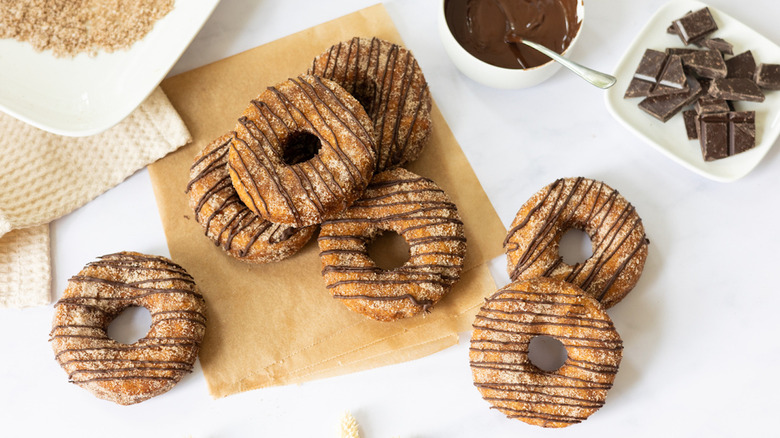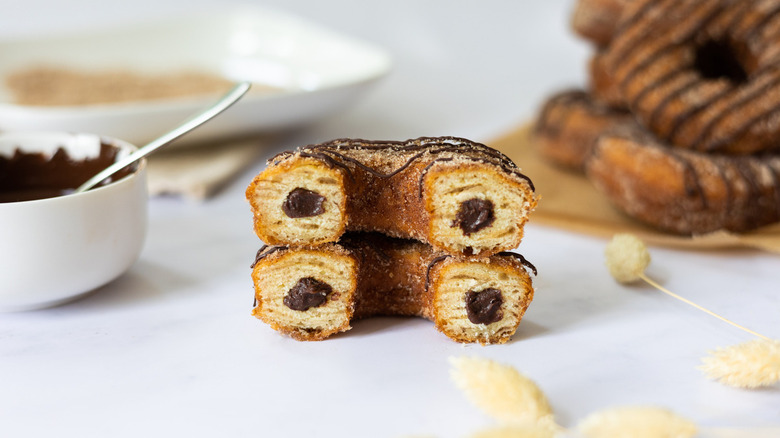When Baking Cronuts, The Fridge Is Your Best Friend
Donuts and croissants are both delicious, iconic pastries — so it only makes sense that they come together to make the cronut, a perfect blend of the two sweet treats. If you're somehow unfamiliar, a cronut is made from laminated yeasted pastry dough (what's used to make croissants), and fried like a donut.
If you want to try to make your own batch of cronuts, Tasting Table has a recipe for salted chocolate cronuts that are the perfect entryway into the delicious dessert. Recipe developer Tanika Douglas swears that the process is straightforward, even though it seems daunting. And when it comes to making cronuts, you definitely already have one of the key appliances: a fridge.
Yep, when it comes to making cronuts, the fridge is your best friend. The cronut dough has to chill in the refrigerator a total of five times before it's ready to be shaped and fried. Firstly, the dough goes in the fridge for 20 minutes after being kneaded for the first time. Then, you'll take the dough from the fridge to roll it out and fold in the butter. After that, you'll repeat the process of rolling and folding (minus the buttering) three more times with the dough being chilled in the fridge in between the rolling process.
If it sounds like a lot of effort, well, it is — but it's also totally worth it.
Why it's necessary to refrigerate the dough so many times
Chilling the dough multiple times and rolling it out in between takes up a huge chunk of the prep time. After all, the total time that the dough spends in the fridge adds up to nearly three hours — that's a lot of waiting around. And while it may seem like it wouldn't hurt to skip the last round of rolling and chilling, it's essential that you fully complete the instructions.
The process of rolling, folding, and chilling is actually key to the finished product — it's how those laminated croissant-like pastry layers are achieved. And the cronut wouldn't be a cronut without the iconic layers from the "cro" half of the pastry. Using time and the fridge gives the dough crucial resting time and ensures that the butter remains cool. Trust us, the nearly seven hours of prep to complete the recipe will be rewarded when you have a batch of fresh, hot, homemade cronuts to indulge in.
Referencing the long prep time, Douglas says, "I would recommend making these cronuts on the weekend, when you have time to relax and enjoy the process." The trick is to use the waiting time to complete other tasks. You could use the culinary momentum to make a quick, hassle-free dessert while you're waiting for the dough to chill — perhaps our orange dreamsicle dessert bars or edible cookie dough. Both are no-bake desserts to keep your hands busy without crowding the oven.

